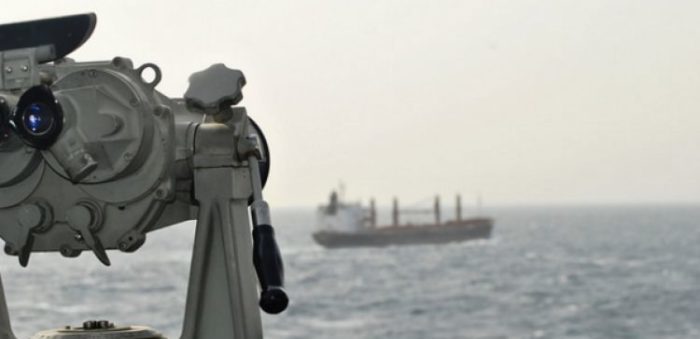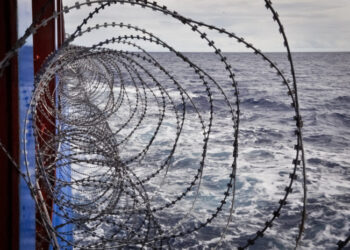During the past few years, there has been a significant fall in piracy and armed robbery incidents off East Africa. However, the threat has not entirely gone away, while other areas are now considered the next hotspots as recent incidents indicate. In this regard, routine reporting and incident reporting are essential to ensure that the military and law enforcement forces are aware of the vessels’ intended sea passages and their vulnerability to an attack
Maritime Piracy: Latest Developments
In mid-May,a total of six pirates attacked a Stolt Tankers tanker, named Stolt Apal, 75 nautical miles off Yemen’s coast. After multiple warning shots were fired by the armed guard team aboard Stolt Apal, the skiffs opened fire on the ship. The armed guard team returned fire, disabling one skiff and ending the pursuit. In addition, the bridge area sustained minor damages from bullets but there were no injuries, no pollution and no cargo impacted on Stolt Apal.
In its Q1 2020 report, the ReCAAP ISC reported a three-fold increase of the incidents that took place between January-March 2020, in comparison to the same months last year. The increase of incidents was observed in Bangladesh, India, Indonesia, the Philippines and Singapore Strait. The report highlights that the rise of incidents onboard vessels while underway in the Singapore Strait during January-March 2020 is of great concern. All the incidents reported in Indonesia and the Philippines occurred on board ships at anchor/berth.
Furthermore, ReCAAP ISC focuses on the alarming issue of crew abduction in the Sulu-Celebes Seas and waters off Eastern Sabah. In this context, ReCAAP ISC highlights the need for law enforcement agencies to enhance surveillance, increase patrols and respond promptly to incidents reported by ships in order to arrest and prosecute the perpetrators.
Recently, the IMO Secretary-General Kitack Lim welcomed latest initiatives to address piracy and armed robbery in the Gulf of Guinea, which has been a main piracy hotspot in the last years. In particular, Mr. Lim noted the efforts “send a strong and valuable message to the international community with respect to the considerable efforts Nigeria is making to curb piracy and armed robbery against ships in the Gulf of Guinea.“The remarks came after a joint meeting between the government of Nigeria and representatives from organizations in the oil and shipping industries, in late May.
The number of incidents in the Gulf of Guinea decreased in 2019 by 14 incidents, to 67, down from 81 incidents in 2018. However, the number of crew kidnappings in this region increased from 11 in 2018 to 20 incidents in 2019, in which 151 crew in total were reported kidnapped/missing – the highest number so far on record.
Key advice and best practices
On the occasion of the increasing tensions and attacks taking place in the Singapore Strait, Singapore’s Information Fusion Centre (IFC) recommends shipowners to maintain a proper and vigilant lookout, adhere to ship security standard operating procedures, and provide timely reporting of incidents to local authorities.
Also, activate the ship’s AIS at all times, use CCTV cameras for coverage of vulnerable areas (if available) and keep ship’s whistle, search lights and fog horn ready for immediate use. Lastly, it is important to secure all doors and hatches preventing access to the accommodation and machinery spaces and take safety precautionary measures on the anchor cable hawse pipe while anchored.
Reporting is vital
Overall, vessels transiting high risk areas are advised to remain vigilant and adhere to BMP5 while all suspicious activity should be reported. Concerning with piracy and armed robbery emerging as persistent threats in the Western Indian Ocean (WIO), the
Gulf of Guinea (GoG) and South East Asia (SEA), ships transiting these areas are encouraged to report to the centres overseeing the Voluntary Reporting Areas (VRAS) to ensure that the military and law enforcement forces are aware of the vessels’ intended sea passages and their vulnerability to an attack.
Routine reporting and incident reporting are essential to enable the centres to best use any assets available to them and to assist in an emergency. Each VRA is defined in the Admiralty Security Maritime Chart (chart) through which vessels transiting can join the respective trusted reporting scheme.
Key points of Contact
In a information note, the Hong Kong Marine Department provides details of the centers per each area where vessels may contact in case of an attack and report any incident. Briefly, the key points of contact are:
The Western Indian Ocean
The VRA of the WIO, including the Gulf of Aden, the Red Sea and the Gulf of Oman with reference to charts Q6099 and Q6111, is administered under the United Kingdom Maritime Trade Operations (UKMTO) voluntary reporting scheme and the Maritime Security Centre – Horn of Africa (MSCHOA) voluntary registering scheme.
UKMTO is the first point of contact for ships to provide liaison with military forces in the WIO, and MSCHOA is the planning and coordination centre for EU Naval forces (EUNAVFOR).
Ships transiting the VRA of the area are strongly encouraged to send regular reports to
UKMTO while ships sailing within the HRA should register with MSCHOA under the
“Group Transit” scheme.
Hong Kong registered ships when transiting the Gulf of Aden should join the Chinese
Navy Vessels Escort Arrangement if protection is sought.
The Gulf of Guinea (GoG)
The VRA of GoG is administered under the Maritime Domain Awareness for TradeGulf of Guinea (MDAT-GoG) voluntary reporting scheme with reference to chart Q6114.
MDAT-GoG is the first point of contact for ships to provide liaison with military forces and therefore, ships transiting the VRA of the GoG are strongly encouraged to send regular reports to MDAT-GoG.
South East Asia (SEA)
The VRA of SEA, especially in the straits of Malacca and Singapore, the southern
portion of the South China Sea, the Sulu-Celebes Seas and at certain ports and anchorages in Asia, is administered under the Information Fusion Centre (IFC) voluntary reporting scheme with reference to charts Q6112 and Q6113.
The Information Fusion Centre (IFC) serves as the first point of contact for ships in the region offering a voluntary reporting scheme for Routine Ship Security Reporting.
In the event of an attempted attack/an actual attack, the Master should alert the nearest coastal State through its Maritime Rescue Coordination Centre (MRCC), the CSO and the International Maritime Bureau (IMB) for Incident Reporting. After the attack, a detailed report shall be provided to the Flag State, the ReCAAP Focal Point, the IFC, the IMB, the Coastal States and the INTERPOL for Post Incident Reporting.
Overall, all masters, ship and company security officers, shipowners, managers and operators should take into account “the version 5 of Best Management Practices to Deter Piracy and Enhance Maritime Security in the Red Sea, Gulf of Aden, Indian Ocean and Arabian Sea” (BMP5) when carrying out risk assessment and planning for voyages transiting where the threat of attack by pirates and armed robbers exists.






























































